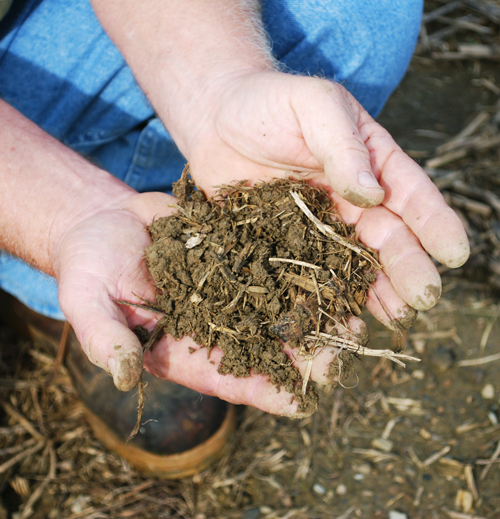- Mon-Fri Hours: 8:00 am - 5:00 pm
At Preferred Capital Management (PCM), our customers deserve a partnership built on trust and healthy relationships. This commitment also extends to all our neighbors. We are committed to serving family farms, and that involves protecting the environment for future generations.
PCM works closely with the NRCS and connects farms with resources to fulfill their own environmental protection commitments, such as reducing carbon footprint through feed or manure timing and quantity adjustments.
This Environmental Management Overview outlines PCM’s processes and protocols to adhere to state and local swine production facility requirements. Although PCM has operations in Iowa and South Dakota, our main enterprises are in Minnesota.
For additional resources with environmental management, please contact us.
Our values are based on our belief that customers deserve a partnership built on trust and a healthy professional relationship. We strive to exceed our customers’ expectations while being relentlessly authentic.
Before we build any swine production facility, we work with state and local organizations to ensure all regulations are properly endorsed.
Owners of any animal feedlot capable of holding 50 or more animal units (AUs), or 10 or more AUs in a shoreland area, are required to register their site with the county’s or state’s Pollution Control Agency (PCA).
Any swine operation with over 1,000 AUs is considered a Concentrated Animal Feeding Operation and needs a state-issued feedlot permit. This includes any construction or expansion of these operations. If an operation has 500 AUs and is near any sensitive environmental area, they also need a state-issued permit for any construction or expansion. A sensitive area includes:
There are several state and local requirements for feedlot permit applications. Some communities have similar requirements for building a swine operation, while others have specific regulations to their community. These may include maximum number of AUs per feedlot or distance from community gathering areas, roads or highways. However, each state-issued feedlot requires the following:
PCM also helps operators with manure record keeping; manure selling and purchasing; manure and water sampling and field mapping, along with helping area crop farmers secure manure for their fields and determine application rates per field and crop. Consider hog manure as a supplement to or replacement for a field’s nutrient composition.

Yes. PCM only uses licensed operators to apply all liquid nutrient products.
Yes and no. Extensive studies show nutrient values can vary, but determine application rate by following your conventional fertilizer program. PCM tests each facility annually to ensure accurate NPK levels.
Studies show that manure’s micronutrients and organic microbes restore soil health, rebalancing soil from use of commercial fertilizers. Manure’s organic material also reduces nutrient runoff.
As a natural product, there may be some odor involved, but we adhere to regulatory guidelines regarding liquid manure application. Like you, we value our relationships with our neighbors and customers. We’ll do everything possible to make sure there’s no reason for complaints.
Manure is sampled and tested to find out the nutrient content. This analysis is used to determine the value based on commercial fertilizer prices, and agronomical application rate.
The available N-P-K is figured using University of Minnesota research that specifies the respectable nutrient availability based on type of application method. Nitrogen availability varies depending on how the manure is applied.
PCM provides guidelines and checklists for our customers to ensure compliance with regulations and detailed record-keeping.
The swine industry is filled with abbreviations and acronyms. Save this list for reference of the most common terms.
Animal Units are used to describe a number of swine in a variety of environmental documents. For example, 500 AUs represents 500 heads of pigs—regardless of growth stage.
PCA is a state agency that monitors environmental quality, offers technical and financial assistance and enforces environmental regulations for each state. The PCA finds and cleans up spills and leaks that can affect public health and the environment.
CAFOs are any confined agricultural meat, dairy or poultry facilities that animals are raised and fed in.
NRCS is a program provided by the United States Department of Agriculture to help farmers reduce soil erosion, enhance water supplies, improve water quality, increase wildlife habitat and reduce damages caused by floods and other natural disasters.
CUPs accommodate for uses that don't fit into any particular zoning district, but have the potential to impact surrounding agricultural facilities.
These nutrients are naturally found in hog manure, which can be spread over soil and are broken down into forms that plants can utilize.
EAWs provide a brief analysis and overview of a project’s potential environmental impacts.
A site plan is a type of drawing used by architects, building developers and engineers to show existing and proposed conditions for a given area. It will also include with great detail building structures size types and purposes.
Liquid manure storage transferred or collected into a pit or lagoon structure. From there, it may be mixed, pumped into manure spreading equipment and applied as a fertilizer source to agricultural fields.
Concerning swine farms, a setback is the minimum distance which a structure must be set back from a street or road; river or other stream; shore or flood plain or any other place deemed to need protection.